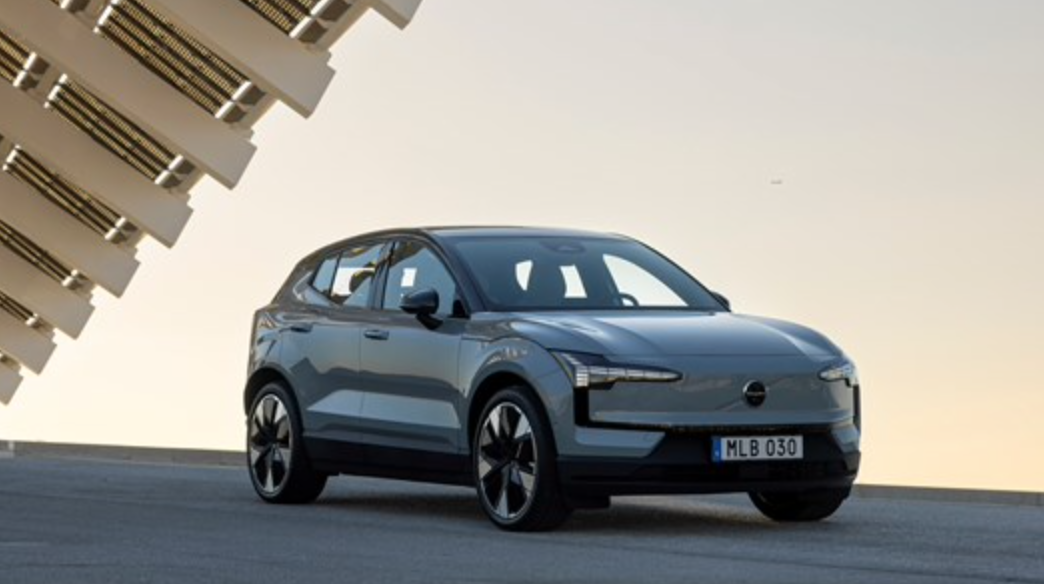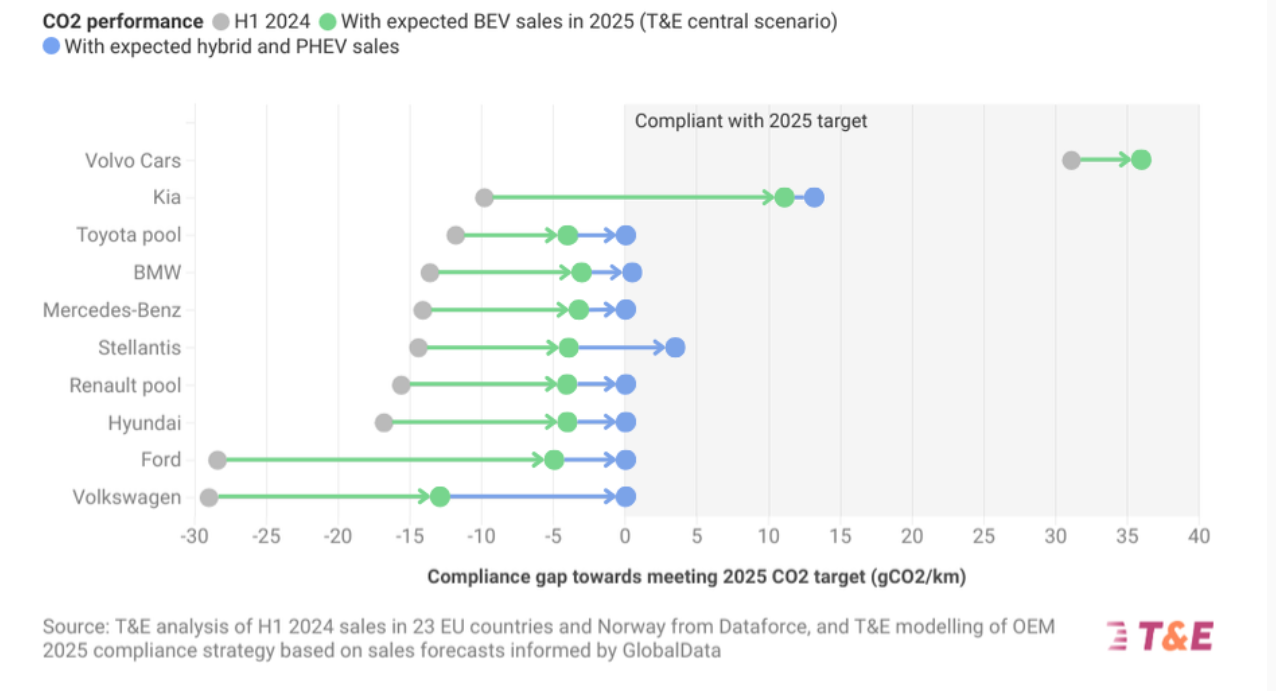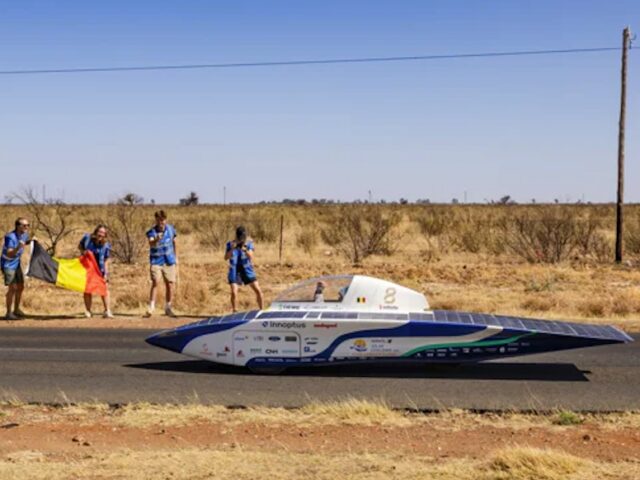According to an NGO Transport & Environment (T&E) analysis, electric cars are expected to reach a 24% European market share as carmakers grow EV sales to meet the EU CO2 targets. “Car manufacturers have clear pathways to meet their EU climate targets next year due to the expected rapid growth in electric car sales,” says T&E, based on their new analysis.
Electric cars (BEV) should reach a 20% to 24% market share in 2025 in the EU (Norway and Iceland included), according to Transport & Environment (T&E) modeling based on sales in the first half of this year and sales forecasts.
Disagreement
Some manufacturers call on the EU to trigger a particular crisis clause to delay their CO2 targets by two years, citing fears over sluggish EV sales. Not all manufacturers, however, are happy with this. A few days ago, CEO Tavares pointed out this would be a foolish decision now that European manufacturers have finally reacted.
That’s also the message of Transport & Environment. T&E’s central scenario forecasts that BEVs will contribute, on average, 60% to the CO2 reduction that carmakers still need to achieve for the EU emissions targets next year.
This will be partly driven by seven new fully electric models under €25,000, which are coming on the market in 2024 and 2025. Those models are the BYD Seagull, the Citroën ë-C3, the Fiat Panda Grande, the Hyundai Inster, the Leapmotor T03, the Renault 5, and the Cupra Raval. The latter will be the first sub-€25,000 BEV in the VW Group, beating its colleague from Volkswagen, the ID.2, which will probably not make it before 2026.
Different scenarios
T&E has developed different scenarios showing different levels of dependence on hybrid vehicles and regulatory flexibilities to comply with the EU’s 2025 CO2 targets.
In T&E’s high HEV scenario, all carmakers are assumed to have additional hybrid sales compared to a baseline informed by GlobalData’s sales forecast. In T&E’s high BEV scenario, all carmakers would focus on BEVs.
In between, T&E’s central compliance scenario is based on bespoke modeling for each carmaker. This scenario is informed by GlobalData’s forecast and carmakers’ published plans. It is based on modeling the share of BEVs and HEVs required to meet the targets, assuming that all carmakers would comply without pooling.
Finally, a fourth scenario assumes that the two laggard carmakers (Ford and Volkswagen) would join the two leaders in the field (Tesla and Volvo).
Lucien Mathieu, cars director at T&E, commented: “2025 will be a great year for Europeans in the market for an electric car. Thanks to a glut of new, more affordable models, BEVs should be almost a quarter of new cars sold.”
“But manufacturers’ reliance on hybrids, which are reaching the limits of their CO2 saving potential, is a short-sighted strategy for the climate and competing with Chinese BEVs,” he warned.
Hybrids as an interim solution
While BEVs would make the most significant contribution, Stellantis and Volkswagen Group are also expected to rely on hybrids (HEVs) for 33% and 30%, respectively, of the CO2 reduction they still need to achieve the EU targets.
That is according to the central scenario in T&E’s modeling, based on sales forecasts informed by market research company GlobalData. It shows that hybrid sales should also close significant parts of the emissions gap for Mercedes-Benz (17%) and Renault (15%).
The central scenario shows that in addition to its fully electric models, BMW is expected to depend on plug-in hybrids to achieve 18% of the emissions cut it needs to meet the EU 2025 target.
If manufacturers rely more heavily on selling hybrids to comply, the overall BEV market share will be 20% next year, according to T&E’s high HEV scenario, compared to 24% in the central scenario. Volvo Cars is already compliant in all scenarios thanks to high BEV sales.
Pooling
According to the analysis, if carmakers still struggle, they can ‘pool’ with other manufacturers to cut their average emissions further.
If VW pools with Tesla, only 17% of its sales would need to be BEVs in 2025 (instead of 22%). If Ford pools with Volvo, as it did in 2021, BEVs would need to account for just 9% of its sales instead of 21%.

Supporting EV demand instead of postponing targets
In July, EU Commission president Ursula von der Leyen confirmed that the bloc’s zero-emissions cars target will advance in 2035. Last week, the German government rejected the car industry’s call to weaken the 2025 target.
T&E is now calling on EU and national lawmakers to take more action to support EV demand through policies such as corporate fleet targets, charging masterplans, and social leasing schemes.
Lucien Mathieu concludes: “We welcome that President von der Leyen and the German government have ended uncertainty over the car CO2 targets.”
“Now it’s time for the EU to support electric car uptake by setting electrification targets for corporate fleets. Governments need to build a stable regulatory environment for EVs with national charging goals and targeted support for buyers.”




Comments
Ready to join the conversation?
You must be an active subscriber to leave a comment.
Subscribe Today